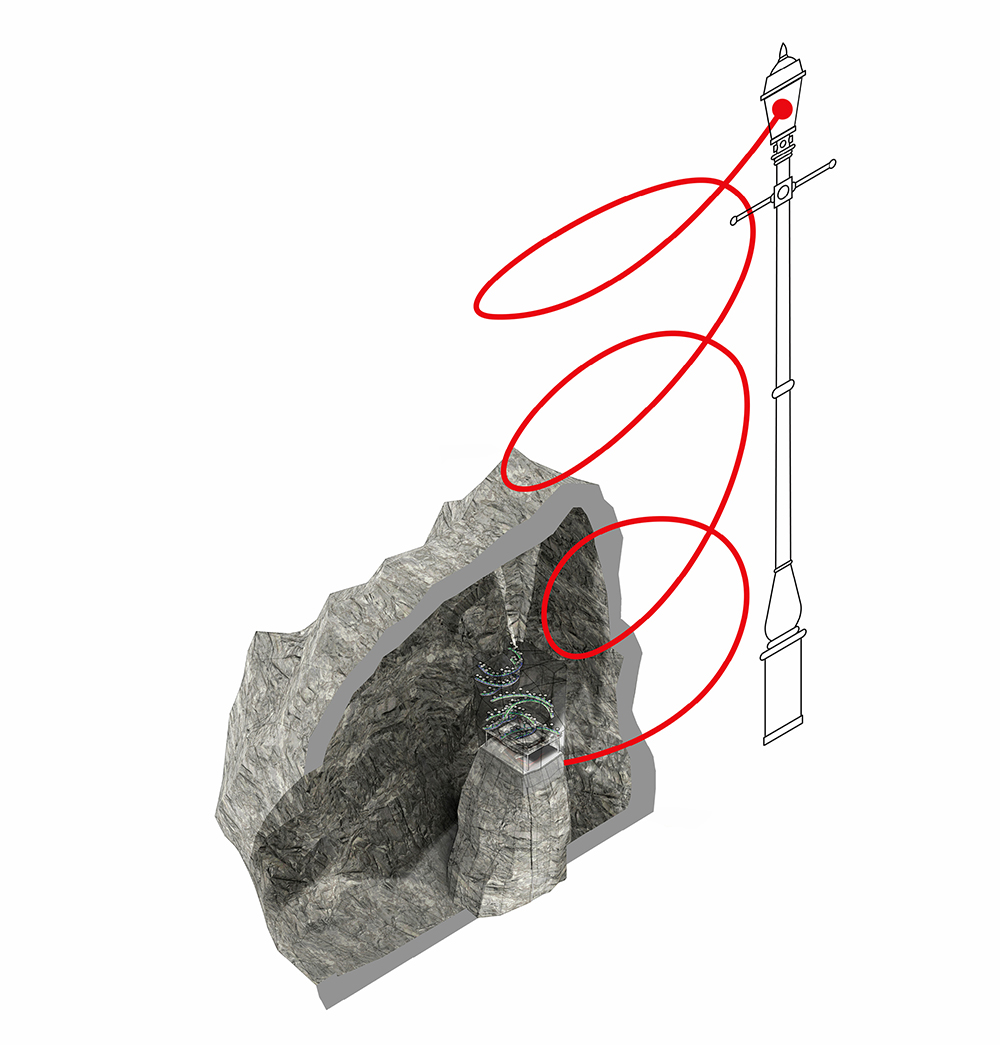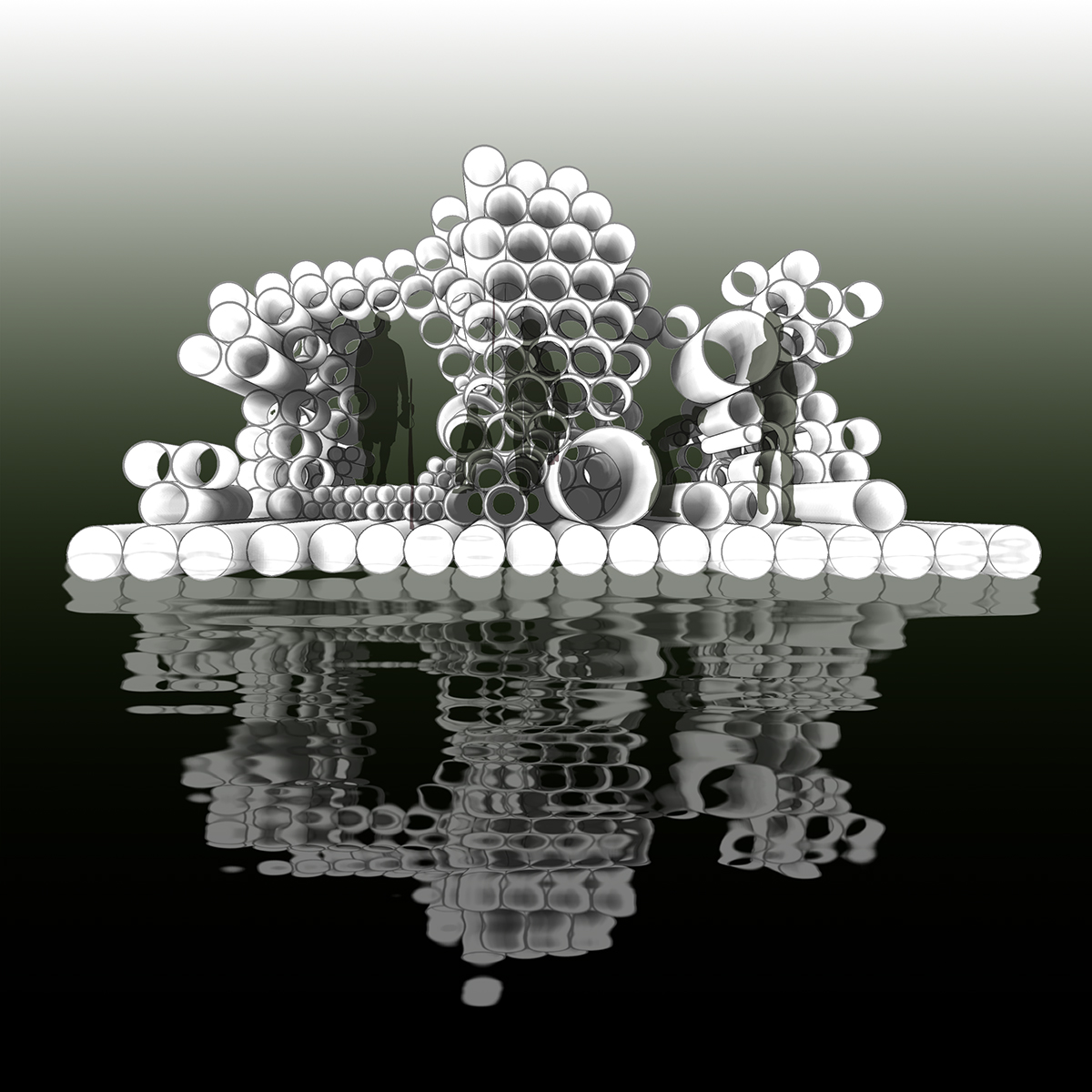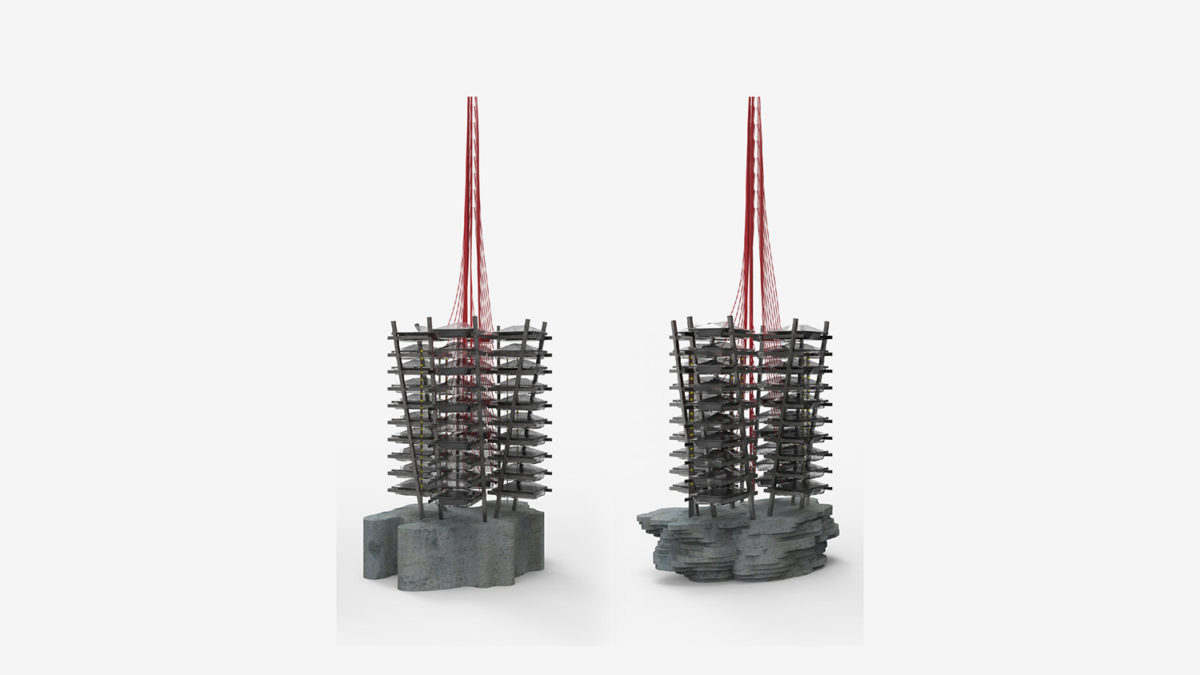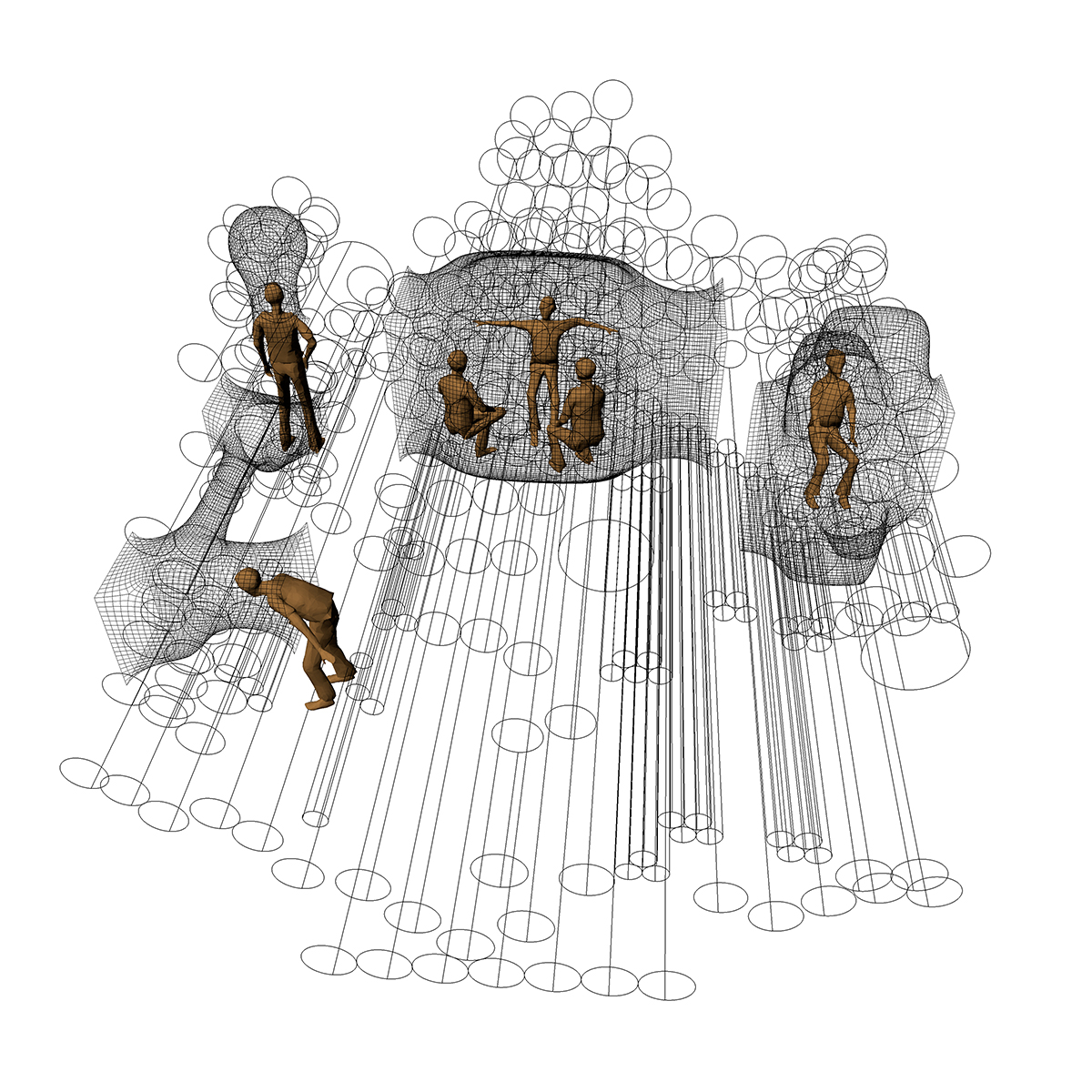“The notion of ‘artistic research’ has really taken hold and captured the imagination of the art world in the past fifteen years,” explains Gediminas Urbonas, associate professor in the Art, Culture & Technology (ACT) program in the MIT School of Architecture and Planning. “But what sets MIT apart is that the legacy of artistic research goes back a half century to the founding of the Center for Advanced Visual Studies in 1967.”
MIT’s deep history of integration of the arts within the science and technology institute—which is being celebrated throughout the year in a series of CAVS 50th Anniversary events—is “unprecedented,” he says, and foundational to how ACT promotes a “radical abandonment of the disciplinary field in search for new modes of valuation and expression.”
In the past, this departure from the conventions of any single disciplinary perspective led MIT artist researchers, such as CAVS Founder György Kepes and CAVS Directors Otto Piene and Krzystof Wodiczko, to develop experimental forms and materials—from the invention of the concept of civic art to inflatables to experimentation with various forms of lighting and technology including laser and holography.
Commenting on this legacy, Urbonas says, “I would argue that what we’re still trying to do in our visual and critical spatial research in ACT is humanities through material engagement.”
In his own work, “material engagement” has likewise come to mean working at civic scale and activating public spaces. Several of his projects—Folk Stone Power Plant, Zooetics and the Swamp Pavilion—represent this CAVS/ACT model. Moreover, Urbonas continues a longstanding practice of MIT artists who do not limit artistic research to an inquiry into the art field itself, but rather, use artistic intelligence and methods to probe diverse subjects.
Folk Stone Power Plant, a networked entity
For Gediminas Urbonas and Nomeda Urbonas, who collaborate as Urbonas Studio, a dysfunctional street lamp outside the Town Hall in the ancient seaside city of Folkestone, UK, symbolized many forms of power failure—political, adjudicative and electrical. It became the starting point for Folk Stone Power Plant, a work produced for the 2017 Folkestone Triennial, an international exhibition of newly commissioned public art.
The installation powers the lamp that was taken off the city grid with innovative microbial and mushroom tissue-based batteries housed in a large manufactured rock, itself a reference to the fossil-rich cliffs of Folkestone. A door in the megalith allows people to “exit reality and enter an imaginary future in this capsule,” Urbonas says, “where living organisms produce and store energy.”

For this project, the Urbonases drew inspiration from 19th-century German polymath Alexander von Humboldt’s drawings and writings, in particular his ideas about interdependence. Urbonas says, “We wanted to highlight the interdependence between the stone, plants, mushrooms, humans and other species in our design.” And, he points out, the installation is conceived as a networked entity:
“The power plant is not just the stone. It is all the relations that we facilitated—with the people at the Town Hall, with the scientists working on the bio-batteries, and all those who are pushing the discourse of energy humanities. This all constitutes the organizational aesthetics of the piece. We do not see the power plant as an isolated object. It is a prop—or a ‘trigger,’ to use cultural theorist Imre Szeman’s term—that puts things in motion, that captures people’s imagination in hopes of shifting and changing their habits of thought.”
Two teams of scientists developed the biological batteries used in the project. A team from Kaunas University of Technology, led by Kristina Kantminienė developed a Microbial Fuel Cell (MFC) battery, from Geobacter species bacteria taken from a pond in Elektrėnai (Electricity town) in Lithuania. Geobacter, discovered by Dr. Derek Lovley and first isolated in 1987, gains its energy from iron oxide (an abundant rust-like mineral in soils and sediments). At the University of Kent in Canterbury, UK, another group of scientists, led by Viktorija Makarovaitė, replaced the graphite in a conventional CR2032 battery—the standard 3.5 volt button cell battery, like those used in watches—with carbonized mushrooms. Their tests showed that this mushroom battery outperformed a store bought one, and most importantly, required no costly extraction of graphite or use of synthetic materials.
Urbonas Studio launched the Power Plant with the Future Energy Summit, a two-day interdisciplinary conference dedicated to reimagining future energy models, post-fossil fuel transition, and energy’s effects on citizenship and culture. The Urbonases are among a growing number of artists working in energy humanities, an emerging field that recognizes that the scale and complexity of environmental issues require overcoming disciplinary boundaries to examine the ethics, habits, policies, values and beliefs around energy. These traditional areas of humanities research complement and inform the work being done in the sciences and in industry. Energy humanities also looks at how energy access, demand, abundance and scarcity shape culture. Urbonas cites an example from modernity: “If you look back a hundred years to modern architecture, to what extent were the designs for buildings driven by energy obesity, by the idea that access to fossil fuels is bottomless?” In light of past oversights, he sees a definite need for artists and designers to make sustainability part of their remit, if not by devising alternative energy sources directly, then perhaps by changing people’s habits or critically probing ways for energy transition with their work.

Toward “productive hybridity”
The Power Plant connects to Urbonas Studio’s larger research project Zooetics, which focuses on intersections of biotechnologies and network systems. Zooetics was initiated in 2014 to explore intersections of human, nonhuman and poetic knowledge spheres, situating an artistic imagination in this context. ACT’s 2018 Zooetics+ Symposium concludes this 5-year-long project and launches a new research program focusing on sympoiesis, or making-with and coming-together in a multispecies world. The MIT symposium invites renowned scholars, artists, philosophers, scientists, anthropologists and cultural theorists to address cohabitation of human and other forms of life as an urgent issue that unfolds through a variety of discourses: indigenous and vernacular knowledge, posthumanism, and human-animal studies, among others.
For the upcoming 2018 Venice Architecture Biennale, the Urbonases curate the Swamp Pavilion, which will represent their native Lithuania. Swamps seem at odds with architecture, given that construction begins with land reclamation, and for any structure to be established on swampland, certain features of that terrain must be eliminated. This view of the swamp as “a monster, alien or rival of civilized humanity,” has persisted for “far too long,” Urbonas points out. “Today—as global environmental disasters make evident—wetlands are physically pushing back on our attempts to industrialize and control them.” The pavilion attempts to enter the swamp, work with its complications and take on its physical and emotional qualities as a way of thinking and imagining anew. Urbonas says, “Once we learn from swamps and begin to understand them, then we can envision how swamps could benefit architecture.”
Throughout the Biennale, the Swamp Pavilion will pilot a flexible and changing learning environment called the Swamp School. Through performative lectures, workshops and public interventions, the Swamp School will support experiments in design, pedagogy and artistic intelligence. Globally recognized tutors and interlocutors from MIT and its partner network, comprised of artists, architects, designers, urbanists and philosophers, will shape installations and workshops in the pavilion and throughout Venice. ACT students enrolled in Studio Seminar in Art and the Public Sphere: Swamp School will participate in designing and implementing this city-wide programming in Venice. The Swamp School consists of three chapters: “Swamp Radio” (focused on sonic transmissions, sound art and bioacoustics), “Futurity Island” (focused on new forms of living), and “Commonism” (focused on speculative forms of citizenship and cohabitation).
Uniting all these projects is Urbonas Studio’s use of artistic research to reprogram habits and find lessons in sustainability from nonhuman organisms. The swamp’s complex ecosystem, friendly to amphibians with not-quite-solid, not-quite-fluid terrain, provides countless planetary benefits—and metaphorically, a way forward. Urbonas sees embracing the “productive hybridity” of swamps as a model not only for art production that crosses disciplinary barriers, but also as a “very important next step for humanity,” as we discard all that is rigid or fixed to restore and to innovate.



